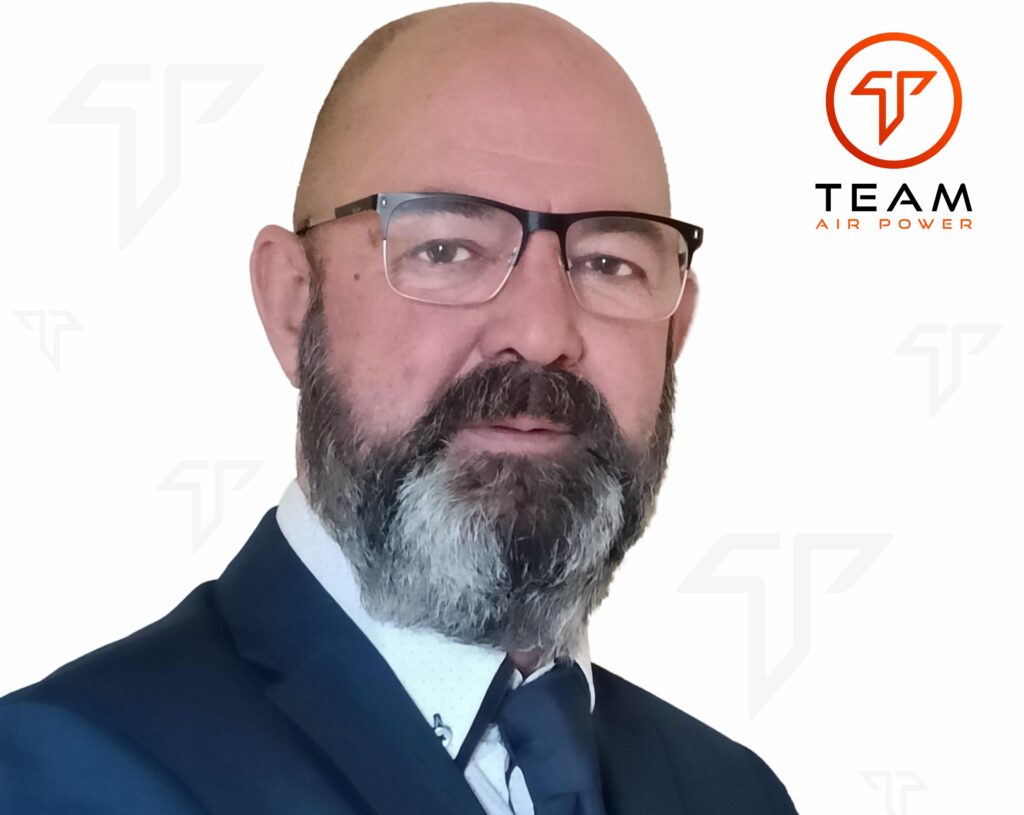We are pleased to introduce a new member of our team. Craig Hodgson has joined us as Regional Sales Manager for Chillers.
Craig has worked in the industry for 35 years, 19 as a Certified Refrigeration Engineer and the last 15 years as a Process Applications Sales Specialist.
If you want to meet Craig and learn about the most challenging system he has designed and the savings he has generated for clients, read the interview below.
Time and technology do not stand still, so we must be ready to evolve and embrace new technologies to offer our clients the best solutions.

Craig, you’ve been on two sides of the fence, service and sales. Tell us how your engineering background has shaped your approach to sales?
The biggest lesson I learnt as an engineer is that we cannot always know the answer to a problem, but the best engineers are those who, when faced with such a problem, seek support. This philosophy has also stood me well in my sales application roles. Time and technology do not stand still, so we must be ready to evolve and embrace new technologies to offer our clients the best solutions.
How many systems have you designed and serviced throughout your career?
Hard to say. I have been servicing, designing and installing Chillers and Refrigeration systems over the last 35 years. Working with in industries such as Plastics, Pharma, Chemical, Beverage, Food, Retail, Precision Engineering and Commercial HVAC. So it would be many hundreds.
What was the most challenging system you have ever designed? Please explain why and how you have resolved the challenge?
Generally, the most challenging part of any system design is not always technical but achieving a system design that meets the customer’s needs within the available budget and timeframe.
Technically the most challenging system design I was involved with would have been for a pharma company that needed a temperature control solution for jacket vessels. The brief was to design the system and supply equipment to cool the jackets to -18°C and heat to 95°C. Heating was achieved with steam as a heat source. We supplied a chiller and TCU package. The chiller and steam were connected to the TCU, which was then attached to the jacketed vessel. The TCU then controlled the temperature of the jacketed vessel depending on what phase of the process the customer was operating. A complete cascade temperature control system was programmed to allow for controlled heat-up and cool-down times along with holding periods in line with the customer’s requirements.
What was the most significant savings you have gained for a customer?
I was asked by a leading producer of blow moulded plastic containers to help with increasing their cooling capacity by 25% whilst reducing their energy usage and carbon footprint. After some consultation, it was decided to separate the system into a primary and secondary design, with a large weir tank acting as the separation point. An energy-efficient chiller with low-pressure pumps was installed on the primary side of the tank. Run stand-by pumps with a filtration unit were fitted to the primary side of the weir tank to provide chilled water to the factory production. A free cooling unit was installed on the return from the factory to the weir tank.
In the first year of operation, the free cooling operated for over 4,600 hours, representing 55% of the total cooling system working hours. Under partial free cooling conditions, the chiller is operating in an unloaded state. When the free cooling provides 100% of the cooling required, the chiller and low-pressure pumps are switched off, thus saving even more energy and prolonging the chiller’s life. The manufacturer estimated savings of £20,000 in the first year of operation and approximately 60% energy savings.
The filtration system was included not only to protect the pumps but to also keep the circulated fluid clean, which in turn helps improve the heat transfer in the moulds helping again to keep energy costs down.
Due to the estimated energy savings, the entire project, including pipe work installation, was funded by a Carbon Trust NI interest-free loan.
We observe that refrigeration systems, often fail. Have you faced such a case and how did you eliminate the problem?
Yes, a plastics extrusion company manufacturing UPVC window profiles and UPVC door panels asked for help after having two chillers fail in quick succession. We found that the evaporators had failed on the chillers due to corrosion in both instances. Further investigation revealed that the chillers cooled water from the calibration table and vacuum directly. As the vapours given off by the melting plastics are absorbed into the water over time, this will create a hydrochloric acid solution that will corrode copper. We, therefore, installed gasketed plate heat exchangers to the calibration table and vacuum pumps to create a separation between the chillers and the table cooling water. Since completing these recommendations, the client has not had any failures due to the corrosion of the evaporators.
We know that one of your after-hour passions is DIY. What DIY project are you the proudest of?
Probably our new kitchen and the extension I built for the utility room, where we repurposed some of the old kitchen units to give us the extra storage and facilities required whilst saving money and also reducing our waste.
You are an avid fisherman. Do you give names to the fish you catch?
No, but generally, the ones that get away are often named with an expletive as they swim away, ready to be caught another day.
If you have any questions for Craig, you can reach him at: craig@teamairpower.co.uk
